Nestled in the heart of the Mediterranean, Malta packs an astonishing amount of wonder into its tiny archipelago. With over 7,000 years of history, sun-drenched landscapes, crystal-clear waters, and a unique blend of cultures, this island nation offers an experience unlike anywhere else in Europe.
This comprehensive guide unveils the very best things to do in Malta and its sister island Gozo, going beyond the standard tourist trail. You’ll discover historical treasures, hidden beaches, cultural experiences, and practical insider tips to make your Maltese adventure unforgettable.
Whether you’re a history buff, a beach lover, a foodie, or simply seeking Mediterranean magic, Malta delivers in spades. From UNESCO World Heritage sites to secluded swimming spots, we’ve covered all the essentials and hidden gems across the main islands.
Malta compact size (just 122 square miles for the entire archipelago) makes it surprisingly easy to explore. The main island of Malta holds most of the population and famous sites like Valletta and Mdina, while more rural Gozo offers a slower pace and natural beauty. Tiny Comino, nestled between them, is home to the famous Blue Lagoon.
How to Use This Guide & Interactive Map
This guide is organized by category to help you plan based on your interests. We’ve divided the attractions into historical sites, natural wonders, Gozo highlights, and unique cultural experiences.
Each recommendation includes:
- A concise description
- Practical tips for visiting
- Approximate costs and time needed
- Map location
Expolore Incredible Things To Do in Malta & Gozo
1. Explore the Baroque Grandeur of Valletta (UNESCO World Heritage City)
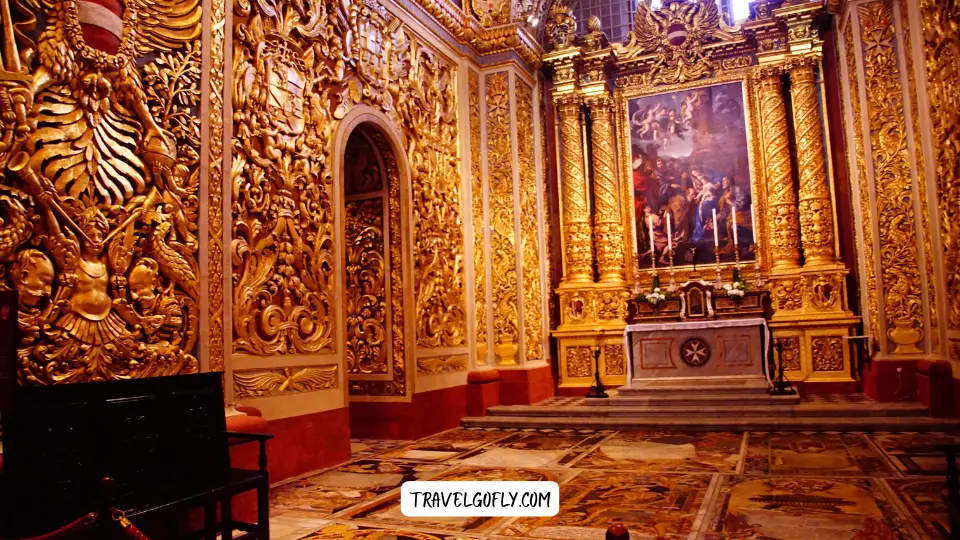 The fortified city of Valletta, built by the Knights of St. John in the 16th century, stands as one of Europe most concentrated historic areas. This open-air museum of baroque architecture has been recognized as a UNESCO World Heritage Site.
The fortified city of Valletta, built by the Knights of St. John in the 16th century, stands as one of Europe most concentrated historic areas. This open-air museum of baroque architecture has been recognized as a UNESCO World Heritage Site.
Key Sights within Valletta:
- St. John Co-Cathedral: Look past the austere exterior to find an interior of breathtaking opulence, including Caravaggio masterpiece “The Beheading of St. John”
- Upper Barrakka Gardens: Enjoy panoramic views over the Grand Harbour and witness the daily cannon firing at noon
- Grand Master Palace: Explore the former seat of power for the Knights of Malta, featuring impressive armor collections and state rooms
Practical Tip: Valletta is built on a hill with many steps and slopes. Wear comfortable shoes and allow a full day to explore without rushing. Morning visits to the cathedral avoid the cruise ship crowds.
Cost/Time: Mix of free sites and paid attractions (€10-15 per site) / Full day recommended
2. Step Back in Time in Mdina, the Silent City
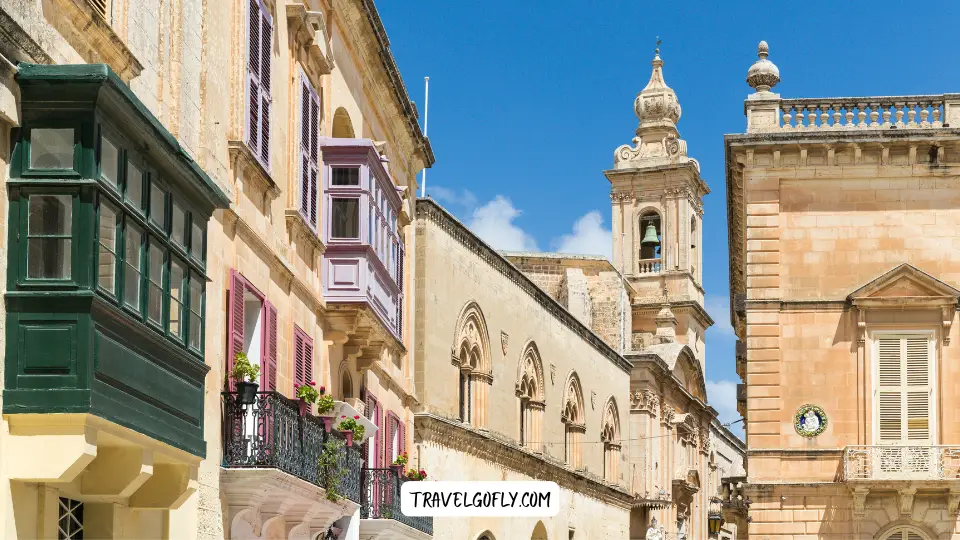 Perched atop a hill in the center of Malta, Mdina has remained virtually unchanged for centuries. This medieval walled city served as Malta capital until the arrival of the Knights in 1530.
Perched atop a hill in the center of Malta, Mdina has remained virtually unchanged for centuries. This medieval walled city served as Malta capital until the arrival of the Knights in 1530.
Walking through Mdina narrow, winding streets feels like stepping into another era. The absence of cars (only residents are permitted to drive) creates an atmosphere of tranquility that earned it the nickname “the Silent City.”
Don’t Miss:
- The magnificent St. Paul Cathedral
- Panoramic views from the city walls
- Palazzo Falson Historic House Museum
- The famous Fontanella Tea Garden for cake with a view
Practical Tip: Visit in the late afternoon as day-trippers leave and golden light bathes the honey-colored limestone buildings.
Cost/Time: Free to enter (individual museums charge €5-10) / Half-day
3. Uncover Prehistoric Mysteries at Ħaġar Qim & Mnajdra Temples
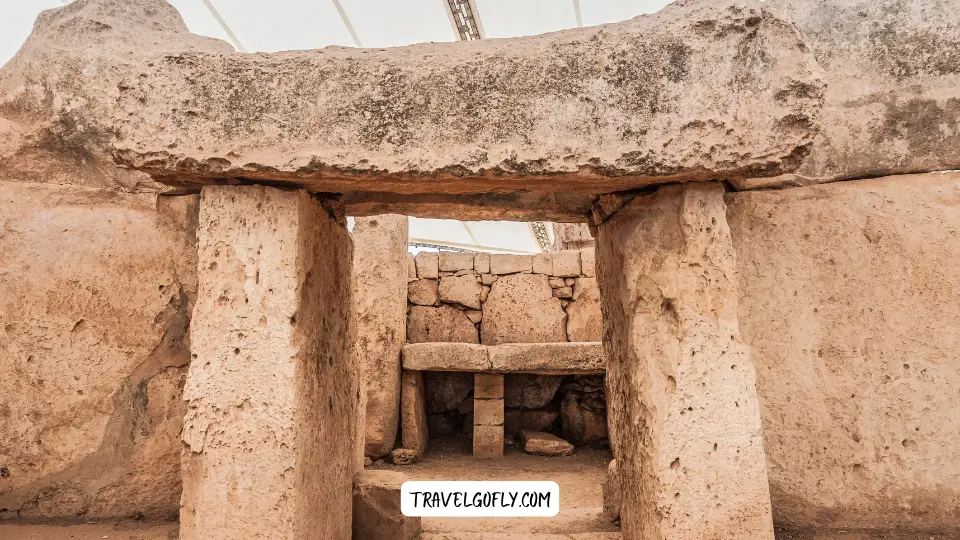 Malta boasts some of the world oldest freestanding structures, predating both Stonehenge and the Egyptian pyramids. The megalithic temples of Ħaġar Qim and Mnajdra date back to 3600-3200 BC and represent an astonishing architectural achievement.
Malta boasts some of the world oldest freestanding structures, predating both Stonehenge and the Egyptian pyramids. The megalithic temples of Ħaġar Qim and Mnajdra date back to 3600-3200 BC and represent an astonishing architectural achievement.
These UNESCO-listed prehistoric sites feature massive stone blocks arranged in complex layouts, with evidence of astronomical alignment and sophisticated building techniques that seem impossible for their era.
Practical Tip: Visit in the morning to avoid the heat. The site now features a protective shelter and informative visitor center that explains the archaeological significance.
Cost/Time: €10 combined ticket / 2-3 hours
4. Delve into Rabat Catacombs & Roman Villa
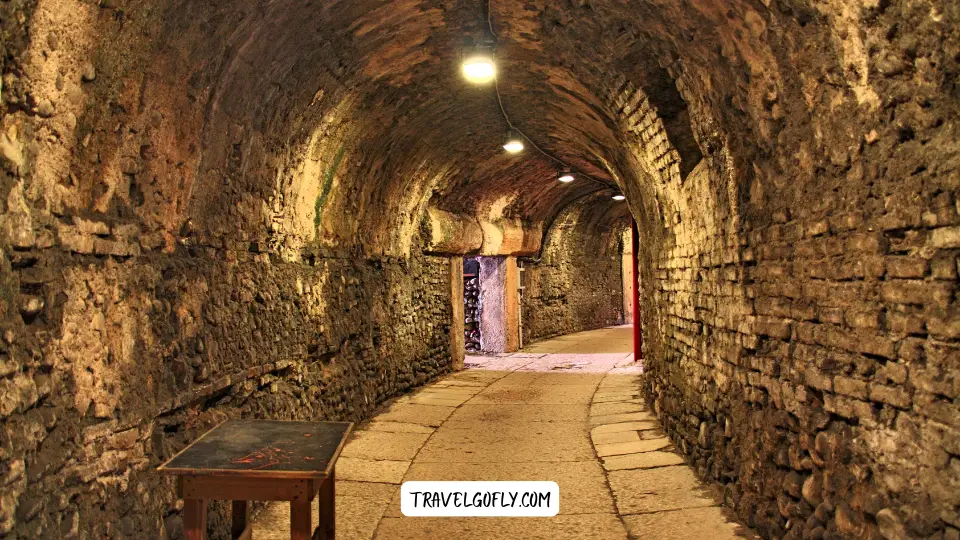 Adjacent to Mdina, the town of Rabat houses remarkable underground treasures. The St. Paul’s and St. Agatha Catacombs form an extensive network of underground Roman burial chambers that provide fascinating insight into early Christian practices in Malta.
Adjacent to Mdina, the town of Rabat houses remarkable underground treasures. The St. Paul’s and St. Agatha Catacombs form an extensive network of underground Roman burial chambers that provide fascinating insight into early Christian practices in Malta.
Nearby, the Domus Romana (Roman Villa) features exquisitely preserved mosaic floors from a 1st century BCE aristocratic Roman townhouse.
Practical Tip: Bring a light jacket even in summer the catacombs maintain a cool temperature year-round.
Cost/Time: €6-8 per site / 2-3 hours for both sites
Stunning Nature & Coastal Wonders
5. Swim in the Crystal Waters of the Blue Lagoon (Comino)
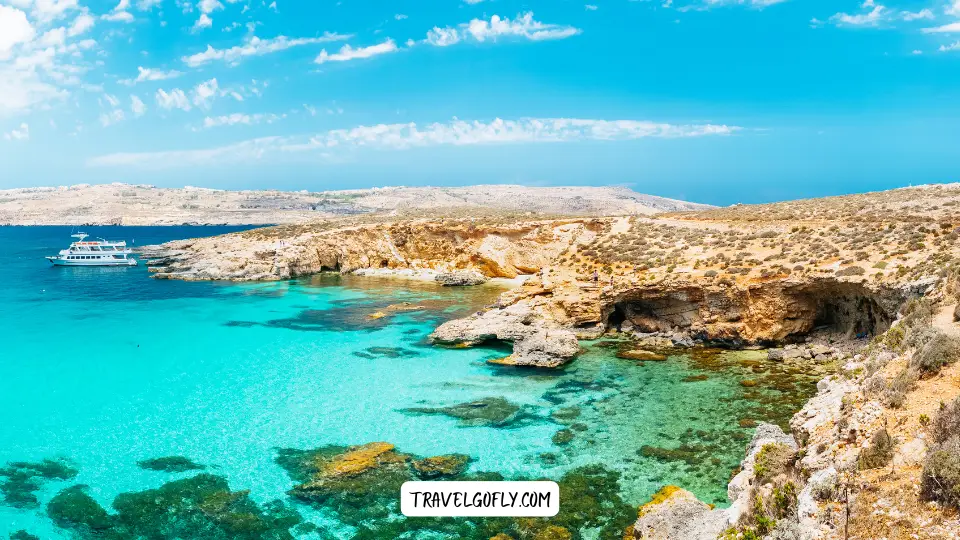 The Blue Lagoon on the tiny island of Comino is Malta most famous natural attraction and for good reason. This sheltered inlet features impossibly clear turquoise waters that appear almost otherworldly.
The Blue Lagoon on the tiny island of Comino is Malta most famous natural attraction and for good reason. This sheltered inlet features impossibly clear turquoise waters that appear almost otherworldly.
Perfect for swimming and snorkeling, the Blue Lagoon offers excellent visibility and comfortable, shallow waters.
Practical Tip: This spot becomes extremely crowded in summer. Visit before 10am or after 4pm to avoid the worst crowds, or consider visiting out of peak season. Bring water and snacks as options on Comino are limited and expensive.
Cost/Time: €10-20 for ferry transport / Half-day to full day
6. Marvel at the Cliffs of Dingli
Rising dramatically 250 meters above the sea, the Dingli Cliffs offer Malta most spectacular coastal panoramas. These sheer limestone cliffs on the western coast provide uninterrupted views of the Mediterranean and the tiny uninhabited islet of Filfla.
The area is perfect for walks along the cliff edge, particularly beautiful at sunset when the limestone glows golden.
Practical Tip: Visit the tiny chapel of St. Mary Magdalene, the island highest point, for the best viewpoint.
Cost/Time: Free / 1-2 hours
7. Discover the Beauty of the Blue Grotto (Boat Trip Recommended)
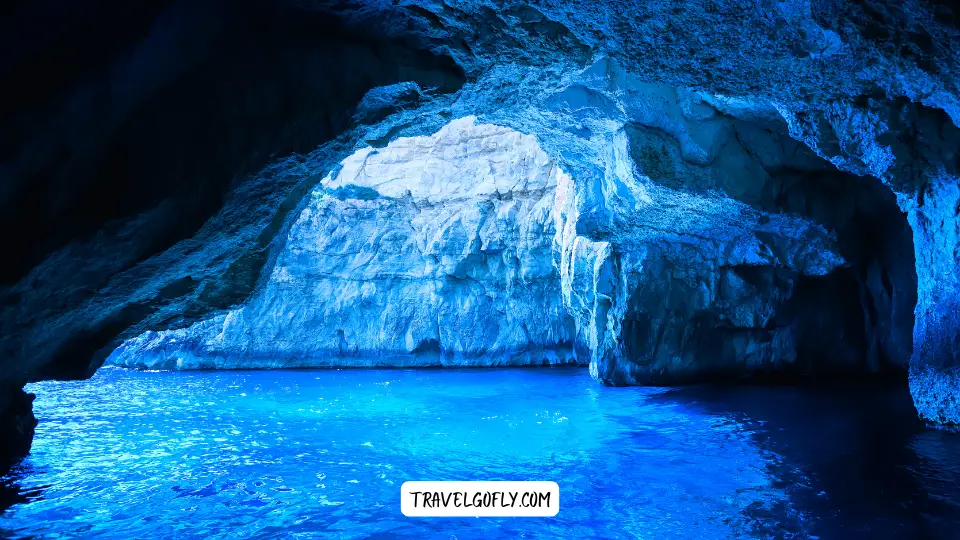 On Malta southern coast, a series of sea caverns have been carved by centuries of wave action, creating the stunning natural formation known as the Blue Grotto. The interplay of sunlight and the white sandy seabed creates mesmerizing blue reflections throughout the caves.
On Malta southern coast, a series of sea caverns have been carved by centuries of wave action, creating the stunning natural formation known as the Blue Grotto. The interplay of sunlight and the white sandy seabed creates mesmerizing blue reflections throughout the caves.
Practical Tip: Visit between 9am and 1pm when sunlight penetrates the caves at the perfect angle. Boat trips run frequently from the small harbor below, weather permitting.
Cost/Time: €8-10 for a 20-minute boat tour / 1-2 hours including viewing from the panoramic point above
8. Relax on Golden Bay or Għajn Tuffieħa Beach
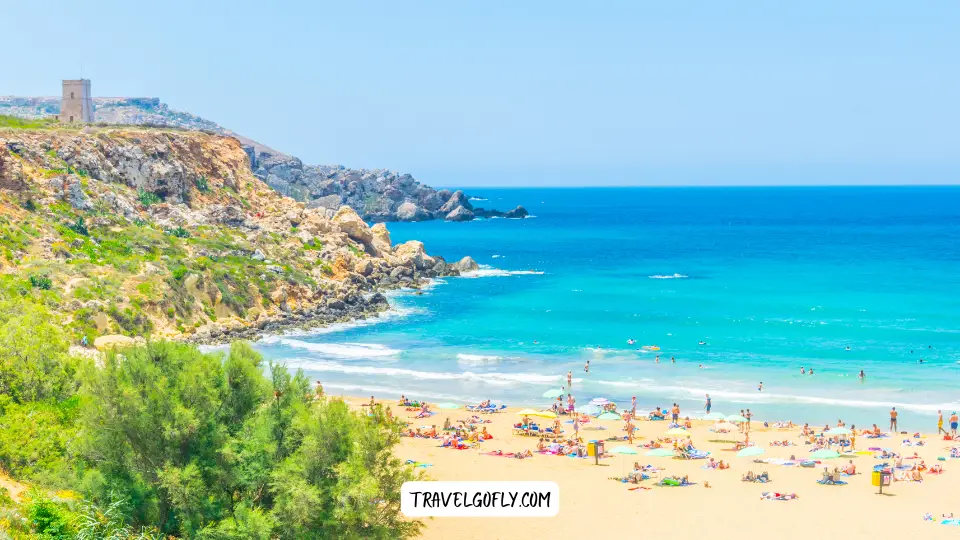 Malta northern coast features several sandy beaches, with Golden Bay and the adjacent Għajn Tuffieħa (Apple Eye) Beach being among the most beautiful. Both offer golden sand, clear waters, and stunning sunset views.
Malta northern coast features several sandy beaches, with Golden Bay and the adjacent Għajn Tuffieħa (Apple Eye) Beach being among the most beautiful. Both offer golden sand, clear waters, and stunning sunset views.
While Golden Bay is more developed with facilities and restaurants, Għajn Tuffieħa remains more natural, accessed via a long staircase that deters some visitors, resulting in a less crowded experience.
Practical Tip: Għajn Tuffieħa has limited facilities, so bring water and snacks if planning to stay long.
Cost/Time: Free / Half-day to full day
9. Explore the Inland Sea & Fungus Rock (Gozo)
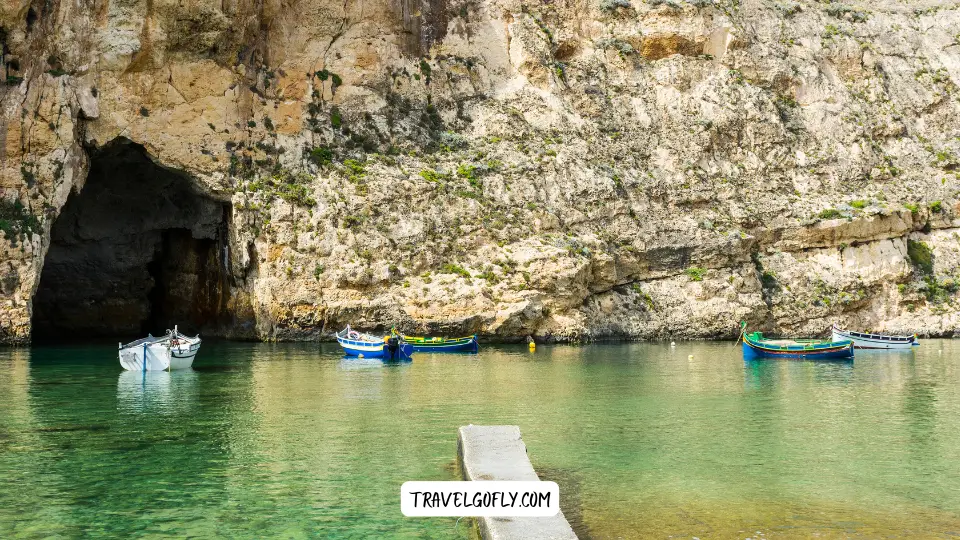 Gozo western coast features some of the archipelago most dramatic scenery. The Inland Sea is a sheltered lagoon connected to the open Mediterranean through a natural tunnel in the cliffs. Nearby stands the imposing Fungus Rock, a 60-meter high limestone outcrop with fascinating historical and botanical significance.
Gozo western coast features some of the archipelago most dramatic scenery. The Inland Sea is a sheltered lagoon connected to the open Mediterranean through a natural tunnel in the cliffs. Nearby stands the imposing Fungus Rock, a 60-meter high limestone outcrop with fascinating historical and botanical significance.
Practical Tip: Consider hiring a local boat to take you through the tunnel from the Inland Sea to the open Mediterranean a thrilling experience offering unique perspectives of the towering cliffs.
Cost/Time: Free to visit; boat trips €4-8 per person / 2-3 hours
Gozo Island Highlights: A Must-Visit Day Trip (or Longer!)
10. Wander Through Victoria (Rabat) & Visit the Citadel
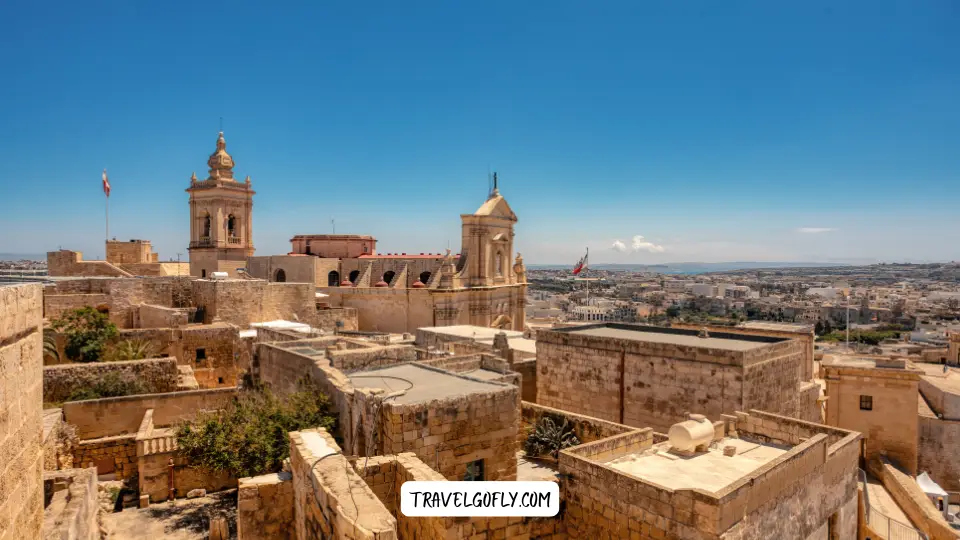 Victoria (locally known as Rabat) is Gozo capital and cultural heart. Its crowning glory is the Citadel, a fortified medieval city that offers 360-degree views across nearly the entire island. The recently restored fortress houses several museums and a magnificent cathedral.
Victoria (locally known as Rabat) is Gozo capital and cultural heart. Its crowning glory is the Citadel, a fortified medieval city that offers 360-degree views across nearly the entire island. The recently restored fortress houses several museums and a magnificent cathedral.
The town below buzzes with life, centered around Independence Square (known locally as it-Tokk) with its market stalls and cafes.
Practical Tip: Don’t miss the daily market in it-Tokk for local produce, crafts, and the chance to mingle with locals.
Cost/Time: Free to enter Citadel grounds (museums have separate fees) / 3-4 hours
11. Admire the Salt Pans near Marsalforn
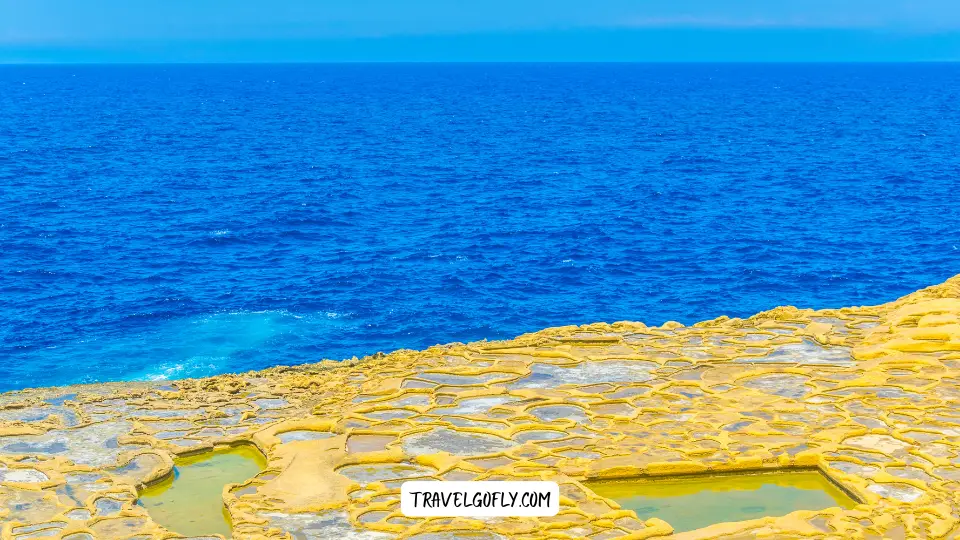 Gozo northern coast features a remarkable 3km stretch of ancient salt pans carved into the coastal rock. Still actively used today, these checkerboard-like formations date back to Roman times and remain an important part of Gozo traditional industry.
Gozo northern coast features a remarkable 3km stretch of ancient salt pans carved into the coastal rock. Still actively used today, these checkerboard-like formations date back to Roman times and remain an important part of Gozo traditional industry.
The geometric patterns create stunning photo opportunities, especially in the late afternoon light.
Practical Tip: Look for small roadside stalls selling locally harvested salt an authentic souvenir with distinctive flavor.
Cost/Time: Free / 1 hour
12. Relax on Ramla Bay (Red Sand Beach)
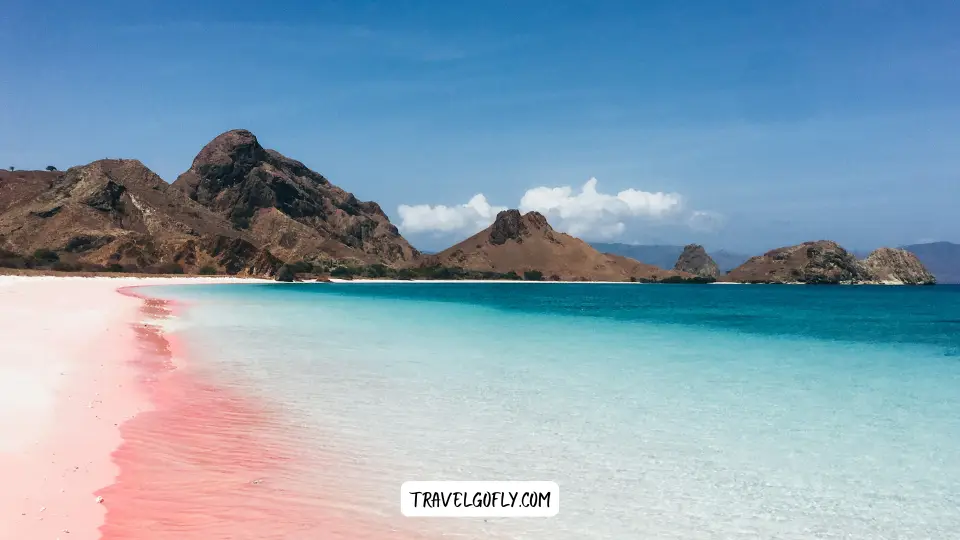 Ramla Bay stands out among Malta beaches for its striking reddish-gold sand. This wide bay on Gozo northern coast offers excellent swimming in a picturesque natural setting backed by countryside.
Ramla Bay stands out among Malta beaches for its striking reddish-gold sand. This wide bay on Gozo northern coast offers excellent swimming in a picturesque natural setting backed by countryside.
Practical Tip: Hike up to Calypso Cave on the western side of the bay for panoramic views and mythological connections legend claims this is where nymph Calypso detained Odysseus for seven years.
Cost/Time: Free / Half-day
13. See the Ta’ Pinu Basilica
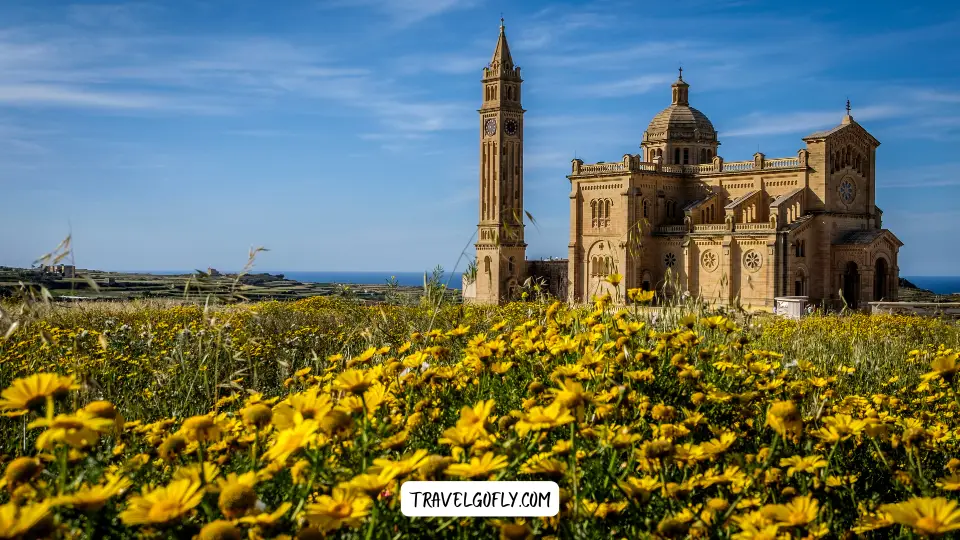 Rising dramatically from the rural landscape, the magnificent Ta’ Pinu Basilica is both an architectural marvel and an important pilgrimage site. Built in Romanesque style with local limestone, the basilica houses hundreds of ex-voto offerings from those claiming miraculous interventions.
Rising dramatically from the rural landscape, the magnificent Ta’ Pinu Basilica is both an architectural marvel and an important pilgrimage site. Built in Romanesque style with local limestone, the basilica houses hundreds of ex-voto offerings from those claiming miraculous interventions.
Practical Tip: The basilica isolated location makes for stunning photographs, especially at sunset when the limestone glows golden.
Cost/Time: Free (donations appreciated) / 1 hour
Getting to Gozo is simple via frequent ferries from Ċirkewwa in northern Malta. The crossing takes about 25 minutes and offers beautiful views. Consider spending at least one night on Gozo to truly appreciate its slower pace and rural charm.
Unique Maltese Experiences & Activities
14. Indulge in a Pastizzi & Kinnie Tasting (Local food/drink)
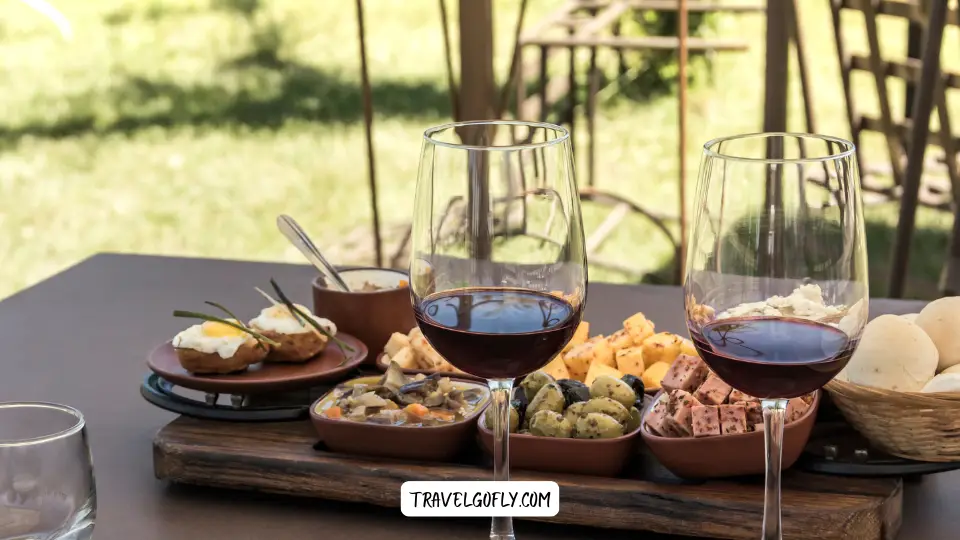 No visit to Malta is complete without trying pastizzi flaky pastry parcels typically filled with ricotta or mushy peas. These inexpensive street snacks are Malta favorite fast food, best enjoyed with a cold Kinnie, the local bitter-orange soft drink.
No visit to Malta is complete without trying pastizzi flaky pastry parcels typically filled with ricotta or mushy peas. These inexpensive street snacks are Malta favorite fast food, best enjoyed with a cold Kinnie, the local bitter-orange soft drink.
Where to try: Crystal Palace in Rabat (known locally as “Is-Serkin” is an institution for authentic pastizzi served 24/7.
Cost: About €1 for two pastizzi and a drink Malta best culinary bargain!
15. Visit the Marsaxlokk Sunday Fish Market
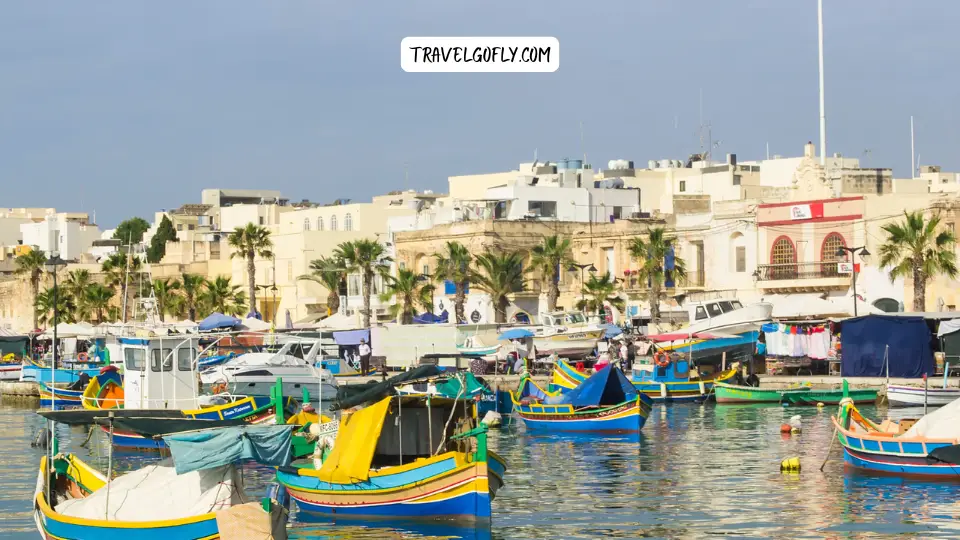 The picturesque fishing village of Marsaxlokk, with its harbor full of colorful traditional luzzu boats (painted with the protective Eye of Osiris), comes alive on Sunday mornings with its famous open-air market.
The picturesque fishing village of Marsaxlokk, with its harbor full of colorful traditional luzzu boats (painted with the protective Eye of Osiris), comes alive on Sunday mornings with its famous open-air market.
While primarily a fish market showcasing the morning catch, you’ll also find local produce, honey, jam, souvenirs and crafts.
Practical Tip: Arrive early (before 9am) to see the market at its authentic best. Stay for lunch at one of the excellent seafood restaurants lining the harbor.
Cost/Time: Free to browse / 2-3 hours plus lunch
16. Take a Traditional Dgħajsa Boat Trip in the Grand Harbour
 Experience Valletta majestic Grand Harbour as travelers have for centuries aboard a traditional Maltese dgħajsa. These colorful wooden water taxis, similar to Venetian gondolas, were historically used to ferry sailors from ships to shore.
Experience Valletta majestic Grand Harbour as travelers have for centuries aboard a traditional Maltese dgħajsa. These colorful wooden water taxis, similar to Venetian gondolas, were historically used to ferry sailors from ships to shore.
A harbor tour offers unparalleled views of Valletta massive fortifications and the historic Three Cities opposite.
Practical Tip: Boats depart regularly from beneath the Valletta waterfront. Negotiate the price before boarding.
Cost/Time: €10-15 per person / 30-45 minutes
17. Experience a Village Festa (Seasonal)
 Summer in Malta means festa season, when each town and village celebrates its patron saint with elaborate decorations, processions, fireworks, and general merrymaking. Nearly every weekend from May through September features a festa somewhere on the islands.
Summer in Malta means festa season, when each town and village celebrates its patron saint with elaborate decorations, processions, fireworks, and general merrymaking. Nearly every weekend from May through September features a festa somewhere on the islands.
Practical Tip: Check local listings for festa dates. The most elaborate celebrations include St. Julian in late August and Mqabba’s renowned fireworks displays.
Cost/Time: Free / Evening to full night
18. Try Scuba Diving or Snorkelling (Numerous Sites)
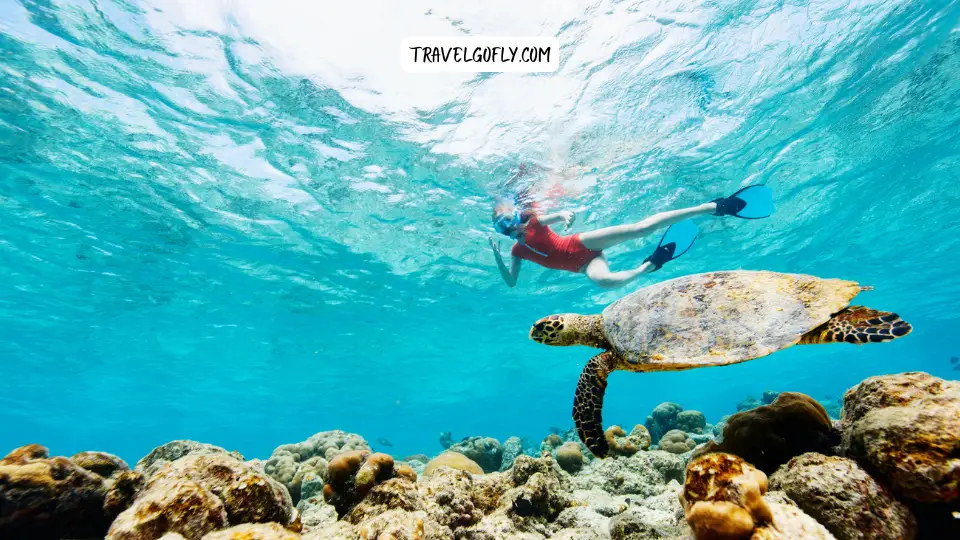 Malta ranks among Europe top diving destinations, offering exceptional underwater visibility, fascinating wrecks, and diverse marine life. Even beginners can enjoy the underwater world with numerous diving schools offering discovery courses.
Malta ranks among Europe top diving destinations, offering exceptional underwater visibility, fascinating wrecks, and diverse marine life. Even beginners can enjoy the underwater world with numerous diving schools offering discovery courses.
Popular dive sites include the Blue Hole in Gozo, the Um El Faroud wreck, and various caves and reefs around the islands.
Practical Tip: For non-divers, excellent snorkeling opportunities abound at Għar Lapsi, Wied iż-Żurrieq, and various rocky beaches.
Cost/Time: €35-80 for introductory dives; equipment rental for snorkeling around €10 / Half-day to full day
Practical Planning Tips for Your Malta Adventure
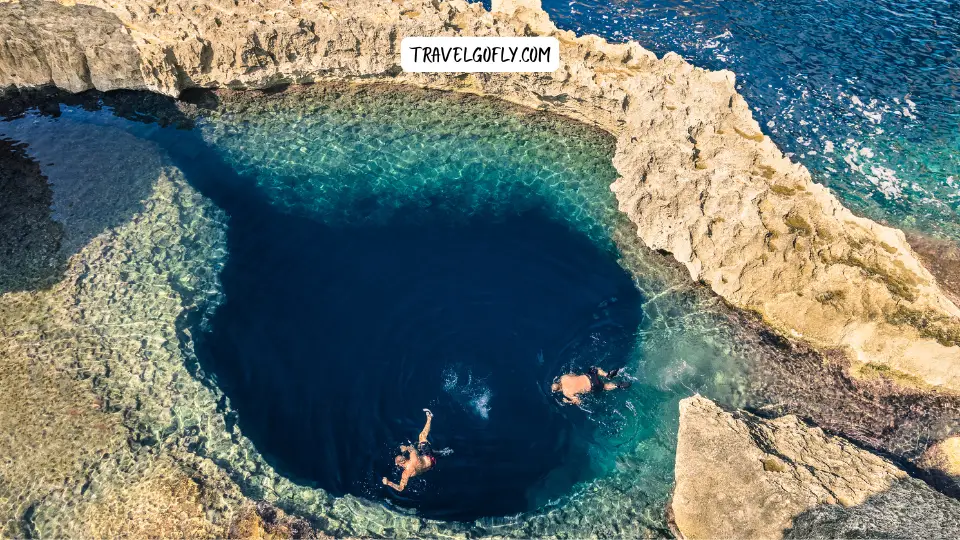 Best Time to Visit Malta
Best Time to Visit Malta
Peak Season (June-August): Hot and busy with perfect beach weather but crowded attractions and higher prices.
Shoulder Season (April-May, September-October): Ideal balance of pleasant weather, fewer crowds, and reasonable prices. Perfect for sightseeing and swimming.
Off-Season (November-March): Mild winters with occasional rain but very few tourists. Many coastal businesses close, but cultural sites remain open and accommodation prices drop significantly.
Getting Around Malta & Gozo
Public Buses: Extensive network covering most of Malta and Gozo. Inexpensive but can be crowded and sometimes unreliable during peak season.
Car Rental: Offers the most flexibility, especially for reaching remote areas. Remember, Malta drives on the left!
Ferries: Regular service between Malta, Gozo, and Comino. The Malta-Gozo ferry runs 24 hours.
Taxis & Ride-sharing: Convenient but relatively expensive for longer journeys. Bolt (similar to Uber) operates throughout Malta.
Where to Stay
Valletta: Central location with historic charm, excellent restaurants, and cultural attractions. Best for culture lovers and foodies.
Sliema/St. Julian’s: Modern hotel districts with shopping, nightlife, and seafront promenades. Ideal for first-time visitors wanting amenities.
Mellieħa/St. Paul’s Bay: Northern beach areas close to ferry terminals for Gozo/Comino. Perfect for beach-focused holidays.
Gozo: Rural tranquility with charming villages and natural beauty. Consider Xlendi or Marsalforn for seaside locations or Victoria for central convenience.
Sample Malta Itinerary Ideas
3-Day Highlights:
- Day 1: Valletta exploration
- Day 2: Mdina, Blue Grotto, and prehistoric temples
- Day 3: Comino and Blue Lagoon day trip
5-Day Explorer:
- Add: Full day in Gozo
- Add: Northern Malta (Golden Bay, Popeye Village, Mellieħa)
7-Day Relax & Discover:
- Add: Overnight in Gozo
- Add: Southern Malta (Marsaxlokk, fishing villages, coastal walks)
Malta Things To Do: FAQ
How many days are enough for Malta? For highlights, 3-4 days minimum. For a comprehensive experience including Gozo, 6-7 days is ideal. Many visitors find themselves wishing they’d planned a longer stay!
Is Gozo worth visiting? Absolutely! Gozo offers a more authentic, rural experience with stunning landscapes and less development. Even a day trip is worthwhile, though staying overnight allows you to experience its special atmosphere after day-trippers leave.
What is the most famous thing in Malta? Historically, the Knights of St. John and their legacy in Valletta. Naturally, the Blue Lagoon on Comino. Culturally, Malta prehistoric temples which are among the world oldest structures.
Is Malta expensive to visit? Malta is moderately priced by European standards. Accommodation and restaurant prices are lower than Western Europe but higher than Eastern Europe. Local food, public transportation, and admission fees are reasonably priced, making it possible to visit on various budgets.
Conclusion
Malta remarkable blend of Mediterranean beauty, millennia of history, and distinctive culture creates an experience that stays with visitors long after they’ve departed its sunny shores. From prehistoric temples to crystal-clear lagoons, baroque cities to sleepy fishing villages, this small archipelago delivers experiences of astonishing diversity and quality.
Whether you’re drawn by history, seeking beach relaxation, or simply want to experience a unique corner of Europe, Malta rewards visitors with unforgettable memories and experiences that far outweigh its tiny size on the map.
Start planning your amazing Malta trip today, and discover why this Mediterranean gem continues to captivate travelers from around the world!
Which of these incredible things to do in Malta are you most excited about? Let us know in the comments!
